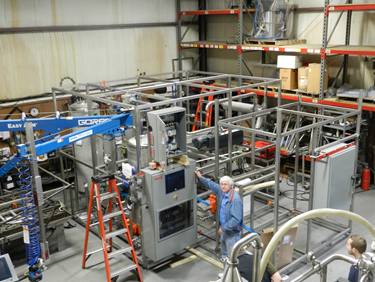Explosion Proof Units
Flammable solvent units are designed using the guidelines allowed in NFPA 69, Standard on Explosion Prevention Systems. Since these system require high concentrations of combustible solvents to perform the cleaning process, the main deflagration prevention method used is by oxidant concentration reduction.
Within these systems the three major tanks containing solvent are all enclosed and are all operated under vacuum to ensure that these tanks are sealed and completely isolated from the ambient surroundings during operation, idling and shutdown.
This type of system is allowed under Section 5.1 that states:
5.1 Application. The technique for oxidant concentration reduction for deflagration prevention shall be permitted to be considered where a mixture of oxidant and flammable material is confined to an enclosure within which the oxidant concentration can be controlled.
Vacuum to Vacuum systems are ideal for the control of oxygen within the whole processing system. The main vessel is evacuated before any introduction of solvents. All other tanks operate under pure vapor and are monitored for increased pressure due to leakage in. Solvent cannot leak out while under vacuum.
Systems using Acetone for plastic leaching, Cyclohexane for difficult flux removal and Isopropyl alcohol for medical devices are in the field. Combining Vacuum to Vacuum systems with the VCN process is an easy modification and has worked very effectively in the field. Any flammable solvent with a boiling point above 100 F can be used.

